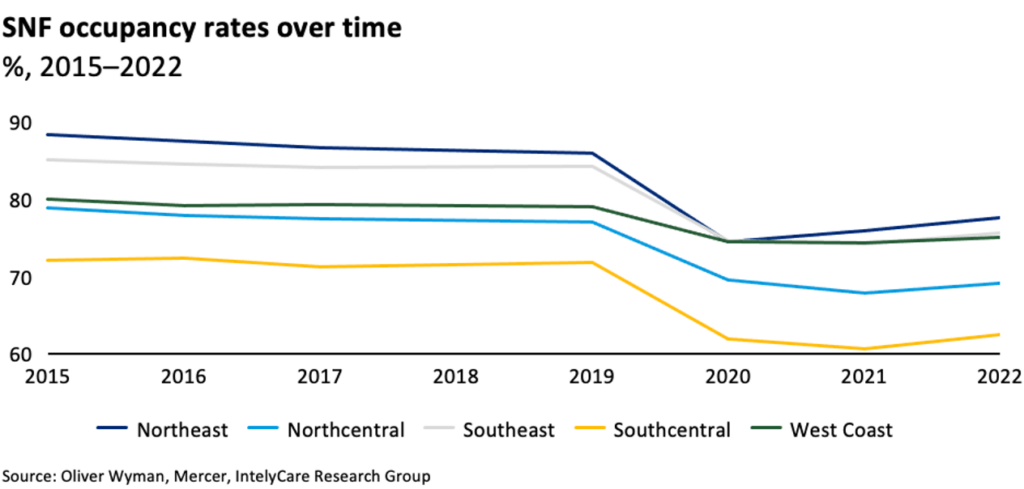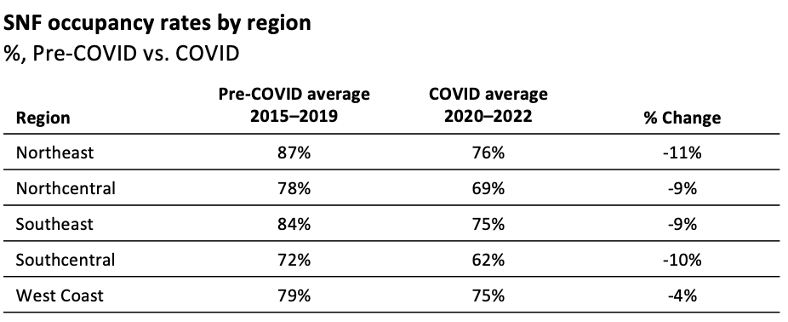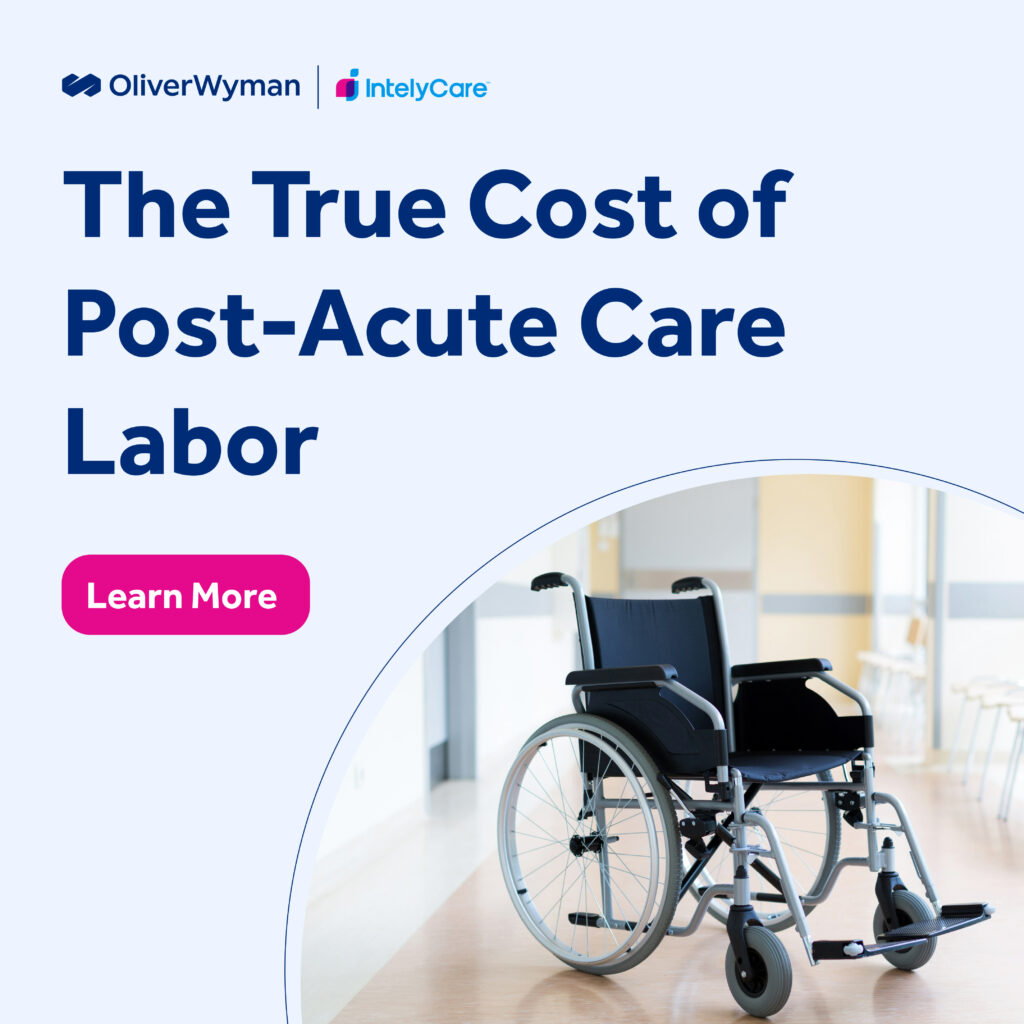Mounting staffing shortages are causing occupancy rates to drop at post-acute care facilities across the country.
Across the U.S., a variety of factors – exacerbated by the pandemic – have depleted the nursing workforce:
- 50-60% of nursing professionals are considering a career change
- Hours worked have increased by up to 15%
- Nursing assistants work nearly 52 hours per week on average
- Nearly 60% who left their jobs cited insufficient staffing as the primary reason why
In “The True Cost of Post-Acute Care Labor,” global management consulting leader, Oliver Wyman, examines why the inability to increase patient referrals due to understaffing has the industry estimated to miss nearly $20BN in unrealized revenue this year.

Average occupancy rates in skilled nursing facilities dropped precipitously in 2020 as the pandemic hit. In 2022, the aftereffects of that drop have created a 6%-14% gap between the current state and optimal (pre-COVID) occupancy rates.
Despite slight rebounds towards pre-pandemic norms in 2022, there is still a significant gap from baseline occupancy. More facilities are being forced to turn away referrals due to the lack of staffed beds and are unable to capture this potential revenue.

As organizational funding and reimbursement are tied to patient volumes, every unoccupied bed represents a loss of revenue for a healthcare facility.
In 2020, the skilled nursing industry lost an estimated $22.2BN, representing 15% of total potential industry expenditure.
The post-acute care market is undeniably in a staffing crisis. The ongoing COVID-19 pandemic has made nursing more difficult and less safe, and more nurses are leaving healthcare than ever before.
Contingent nursing labor continues to be perceived as a temporary solution that is, financially, far less preferable than staffing a facility with full-time employees. However, Oliver Wyman’s research demonstrates that this is a harmful perception. In most cases, contingent labor is less expensive, more flexible, and less resource-intensive to a facility than identifying, recruiting, and retaining new full-time talent.
Want to learn more about strategic ways to improve staffing levels and increase occupancy and revenue?

